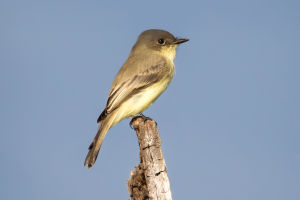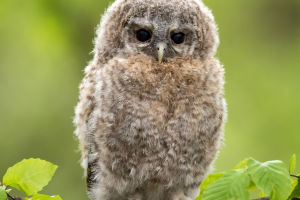Birds are among the most fascinating creatures on Earth, primarily due to their ability to take to the skies with grace and agility.
This mastery of flight is not by chance; it results from millions of years of evolution, leading to unique adaptations that enable them to soar, hover, dive, and glide through the air.
So, Lykkers, let’s dive into the incredible world of birds and explore the specialized features that make flight possible.
Lightweight Body Structure
One of the key adaptations that enable birds to fly is their lightweight body structure. Birds have evolved several strategies to reduce body weight while maintaining strength:
1. Hollow Bones: Bird bones are hollow and filled with air sacs, making them extremely light yet strong enough to withstand the forces of flight. This adaptation reduces their overall body weight, allowing them to stay airborne with minimal effort.
2. Reduced Organs: Birds have a unique body plan that includes a single ovary (instead of two) and no bladder. They excrete uric acid instead of liquid urine to save weight. Additionally, during breeding season, certain organs shrink to conserve energy.
3. Feathers: Feathers are incredibly light but provide maximum surface area for lift and control. They are made of keratin, the same protein found in human hair and nails, making them durable and flexible.
Specialized Muscles and Skeleton
To power their wings, birds have developed specialized muscles and skeletal features:
1. Powerful Flight Muscles: Birds have highly developed pectoral muscles, which account for up to 30% of their total body weight. These muscles are responsible for the powerful downstroke needed for flight. The supracoracoideus muscle aids in the upstroke, providing lift and control.
2. Fused Bones: Many of a bird's bones, like the furcula (wishbone) and the keeled sternum, are fused together, creating a rigid framework that supports the powerful flight muscles. The keel provides an anchor point for the muscles, allowing for efficient wing movement.
3. Modified Forelimbs: Birds’ wings are modified forelimbs with elongated finger bones that support flight feathers. This unique bone structure provides both flexibility and strength, enabling birds to manipulate their wings for different types of flight, from hovering to diving.
Efficient Respiratory System
Birds require a highly efficient respiratory system to meet the high oxygen demands of flight:
1. Air Sacs: Birds possess a complex system of air sacs that connect to their lungs. This system ensures a continuous flow of air through the lungs, providing a constant supply of oxygen, even during exhalation. This adaptation allows birds to fly at high altitudes where oxygen levels are lower.
2. Cross-Current Gas Exchange: Unlike mammals, birds have a cross-current gas exchange system, where air passes through the lungs in one direction while blood flows in the opposite direction. This maximizes oxygen uptake, allowing for sustained energy during flight.
High Metabolic Rate
Flight requires a tremendous amount of energy, and birds have evolved to meet this demand with a high metabolic rate:
1. Endothermy (Warm-Blooded): Birds are warm-blooded, which allows them to maintain a high body temperature, enabling their muscles to function efficiently even in cold conditions. This high metabolic rate supports the rapid energy turnover required for sustained flight.
2. Specialized Diet: To fuel their high-energy needs, many birds consume high-calorie diets. For example, hummingbirds feed on nectar rich in sugars, while raptors like eagles consume protein-rich prey to sustain their energy levels.
Streamlined Body Shape
A bird's body shape is optimized for minimal air resistance, allowing for smooth and efficient flight:
1. Aerodynamic Contour: Birds have a streamlined body shape with smooth feathers that reduce air resistance, allowing them to cut through the air with minimal drag. The contour feathers overlap like roof shingles, providing a sleek, smooth surface.
2. Tapered Wings: Birds’ wings are typically tapered, with a broad base near the body and a narrower tip. This shape provides an ideal balance between lift and drag, enhancing their ability to maneuver, glide, and dive.
Flight Adaptation in Birds | 20 Flight Adaptation in Birds to Learn
Video by Zoologist Mohsin
Exceptional Sensory Abilities
Birds have also developed sharp sensory adaptations to navigate the skies effectively:
1. Acute Vision: Most birds have exceptional eyesight, with eyes that are larger in proportion to their head size than most mammals. Raptors like eagles have keen vision, allowing them to spot prey from great distances. This heightened visual acuity helps birds avoid obstacles, locate food, and navigate.
2. Magnetic Navigation: Some bird species, like pigeons and migratory birds, possess magnetoreception, an ability to detect Earth's magnetic fields. This adaptation allows them to navigate accurately across vast distances during migration.
Behavioral Adaptations for Flight
Beyond their physical traits, birds exhibit several behavioral adaptations that enhance their flying abilities:
1. Formation Flying: Birds like geese fly in a V-formation to reduce air resistance and conserve energy. Each bird benefits from the upwash created by the wingtips of the bird in front, making long-distance flights less exhausting.
2. Soaring and Gliding: Many birds, such as vultures and albatrosses, use thermal currents and air drafts to soar and glide with minimal energy expenditure. By circling in rising air currents, they can stay aloft for hours without flapping their wings.
Birds are truly marvels of evolution, having developed a wide range of physical, physiological, and behavioral adaptations that enable them to conquer the skies. These adaptations not only allow birds to survive but also thrive in diverse environments, making them one of the most dynamic and captivating groups of animals on the planet.


